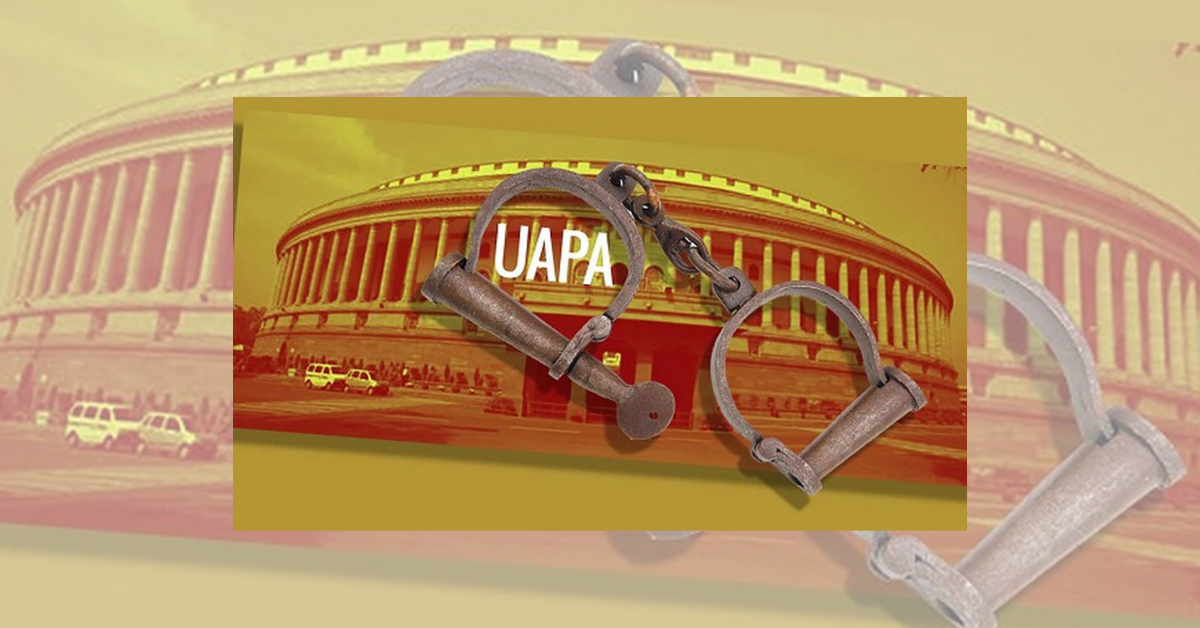The following is a brief description of some procedural rules that a young litigator intending to practice on the Original Side of the Bombay High Court ought to be familiar with. This is obviously a vast subject and what follows only scratches the surface.
Clause 12 Leave:
The normal rule in India is that a suit can be filed where the “cause of action” arises either “wholly or in part” [see: Section 20(c), Code of Civil Procedure, 1908 (“CPC”)]. For example, let’s say that a contract is supposed to be performed in both Pune and Delhi and is not performed in either place. A suit for the breach of this contract can be filed in either Pune or Delhi, since the cause of action arises partly in Pune and partly in Delhi. The Bombay High Court, however, is different. Clause 12 of the Letters Patent (issued by Queen Victoria) says that if the cause of action partly arises in Mumbai, no suit can be filed at the High Court unless the “leave” or permission of the court is first obtained. In other words, if a contract is meant to be performed in both Mumbai and Delhi and is not performed in either place, a suit for breach of contract can only be filed at the Bombay High Court if the court first grants permission to do so [see further: Section 120, CPC].
A petition seeking leave under Clause 12 can be filed either before the suit itself is filed, or before the suit is “numbered” (i.e., after the suit is given a “lodging number” by the department and before it gets a final number), but not thereafter [see: Caribjet Inc. v. Air India Ltd., (2005) 3 Bom CR 94]. It will usually be heard ex-parte, though a defendant can subsequently apply to the court to have the leave revoked.
Company’s Registered/Subordinate Office:
The normal jurisdictional rule in India is that when the defendant is a company, a suit can be filed in a court if the defendant’s principal or sole office is situated within the court’s jurisdiction [Explanation to Section 20, CPC]. On the other hand, a suit must be filed in a court within whose jurisdiction a company’s branch office is located if the cause of action also arises there [see: Patel Roadways Ltd. v. Prasad Trading Company, (1991) 4 SCC 270]. For example, let’s say that a plaintiff wants to file a suit against a bank to restrain it from encashing a bank guarantee. The bank’s registered office is in Delhi, but it has a branch office in Pune. While a suit can be filed against the bank in Delhi, it must only be filed in Pune and not Delhi if the cause of action arose in Pune (e.g., if the bank guarantee is sought to be encashed in Pune). Once again, the Bombay High Court is an exception to this normal rule. Under Clause 12 of the Letters Patent, a suit may be filed against a company even if the company merely has a subordinate office in Mumbai, with no part of the cause of action arising here [see: KPL International Ltd. v. API Industries, (2016) 1 Bom CR 378].
Clause 14 Leave:
Clause 14 of the Letters Patent of the Bombay High Court is most often used in trademark disputes. This is because trademark suits are typically suits filed for both infringement and passing off. Contrary to the usual rules of jurisdiction, trademark infringement suits can be filed where the plaintiff is situated [Section 134, Trade Marks Act, 1999]. This is an inversion of the normal rule that a suit is ordinarily filed where the Defendant is located. However, the normal jurisdictional rules still apply to passing off suits. A situation may therefore arise where a court may have the jurisdiction to hear a trademark infringement suit but not a passing off suit.
Consider the following example. Company A is the registered owner of trademark “X”. Company A has its registered office in Mumbai. Company B is selling similar goods to customers in Lucknow under the mark “X”. Company B has its registered office in Lucknow, and has no branch office or operations in Mumbai. A trademark infringement suit can be filed by Company A against Company B at the Bombay High Court since Company A has its registered office in Mumbai. However, ordinarily, a passing off suit would have to be filed in Lucknow since Company B is based there and the cause of action arises there.
This is where Clause 14 of the Letters Patent comes in. It says that the High Court may grant leave to a person to club two causes of action together, where the court has the jurisdiction to hear one of those causes of action. In the example given above, since the High Court has the jurisdiction to hear the trademark infringement action, it can grant permission to club the passing off action with the infringement suit.
Unlike Clause 12, leave under Clause 14 can be obtained at any time, even after the suit is registered [see: Burroughs Wellcome (India) Ltd. v. GK Sharma, (1989) IPLR 60: (Para 4)]. Also unlike Clause 12, a Clause 14 petition will usually be disposed of after hearing the Defendant [see: Harman Overseas v. Dongguan TR Bearing Company Ltd., (2018) 2 Bom CR 167].
Notice of Motion / Chamber Summons:
Broadly speaking, two kinds of interim applications can be filed in suits on the Original Side of the Bombay High Court: a “Notice of Motion” and a “Chamber Summons”. The rule of thumb is that a Notice of Motion is usually filed for some substantive interim relief from the court (e.g., an application under Order 39 of the CPC for an interim injunction), while a Chamber Summons is filed for some procedural matter (e.g., an application to amend pleadings). [There are, of course, exceptions]. The Original Side rules set out which of these is to be filed for what purpose [see: Rules 121 and 142, Original Side Rules]. However, frankly, the difference between a Notice of Motion and a Chamber Summons is now only a formal one, and it would be rare to see a judge getting impressed by a technical argument that someone has filed a Notice of Motion instead of a Chamber Summons or vice versa. On the Appellate Side, by contrast, every interim application is just called a “Civil Application”, which avoids the confusion in this nomenclature.
A “Chamber Order” on the other hand, is typically an application filed before the Prothonotary and Senior Master of the High Court (an administrative officer in the department) [see: Rules 131 and 133, Original Side Rules].
Ad-interim / Interim relief:
When an application for interim relief is filed in a suit, there are typically two kinds of orders that can be passed by the court: ad-interim orders and interim orders.
Ad-interim orders are typically passed before the Defendant gets a chance to file a reply to the interim application. These are usually issued because of some grave urgency in the matter and are often not granted if the plaintiff has dragged his feet while bringing the case to court. In a sense, ad-interim relief is temporary interim relief. It lasts no longer than the final hearing and disposal of the interim application. On the other hand, interim orders are passed by a court after finally hearing the interim application. Interim relief is therefore final interim relief. It ordinarily lasts until the court finally hears and disposes of the suit. Since a suit at the Bombay High Court may take years, if not decades, to decide, interim relief is often as good as final relief in a case. Cases are therefore frequently settled by the parties on the basis of the interim relief which is granted by a court.
For instance, let’s say that A files a suit against B in which A asks the court to put A in possession of a plot of land which is, for the moment, in the possession of B. Along with his suit, A files a Notice of Motion seeking to prevent B from creating third party rights in the land. The suit and Notice of Motion are filed on 1 October 2018. A’s advocate then “mentions” the matter on 3 October 2018 and has the Notice of Motion “circulated” a few days later, on 5 October 2018 [terms which have been discussed in an earlier blog post]. On the date of hearing, B’s advocate appears and asks for time to file his reply to the Notice of Motion. He says that his client has just recently been served with the papers on 3 October and that he hasn’t had sufficient time to obtain instructions from his client. The court, even so, may grant A an “ad-interim” injunction restraining B from creating third party rights in the property. Once B files his reply and A files his rejoinder, the court fixes a date to hear the Notice of Motion. After hearing both sides, the court may then dispose of the Notice of Motion by issuing an “interim” injunction restraining B from creating third party rights in the property.
On the Original Side, interim applications will very rarely be heard ex-parte, even at the ad-interim stage. The court will usually insist on some proof to show that the Defendants have been served with the papers. Perhaps intellectual property matters sometimes constitute an exception to this rule.
Today, since the court often lacks the time to hear and finally decide interim applications due to the sheer volume of work, ad-interim orders are as good as final orders.
Letters Patent Appeal:
The CPC provides that an appeal can be filed either against a decree [Order 41, CPC], or against certain specified kinds of appealable orders [Order 43, CPC], passed by a trial court. However, Clause 15 of the Letters Patent of the High Court governs intra-court appeals. It says that an appeal may be filed against a “judgment”, a word which has been interpreted as being broader than just decrees and appealable orders under the CPC [Shah Babulal Khimji v. Jayaben D. Kania, (1981) 4 SCC 8 (paragraphs 113, 120)]. For example, if the High Court gives a party leave to withdraw a suit with liberty to file a fresh suit, this amounts to an appealable “judgment” under Clause 15, even though this is only an interlocutory order which is neither a decree nor an appealable order under the CPC.
Prior to the 2018 amendment, the Commercial Courts Act, 2015, complicated this jurisprudence [see: Hubtown Ltd. v. IDBI Trusteeship, (2016) SCC Online Bom 9019; Sushila Singhania v. Bharat Hari Singhania, (2017) 4 Bom CR 348; Sigmarq Technologies Pvt. Ltd. v. Manugraph India Ltd., (2018) 1 Bom CR 202]. Section 13 of the Commercial Courts Act said that a “decision” could be appealed against, but the word “decision” was not defined in either that Act or the CPC. However, following a recent amendment in May 2018, only a “judgment” [as defined in the CPC – see: s. 2(2), Commercial Courts Act; s. 2(9), CPC], or an appealable order under the CPC, can be appealed against, which brings intra-court appeals in line with the CPC.








Thanks for such an informative article
I Request you to please explain word”rule” which is commonly used in the judgements delivered in by hon’ble judges of high court
I am truely impressed by the article as well as very much thankful for such an informative substance. It will definitely help all concerned
Very nice and informative article.
Thanks Abhinav very informative article
thank you.
gs1jej
384qad
Your article helped me a lot, is there any more related content? Thanks!